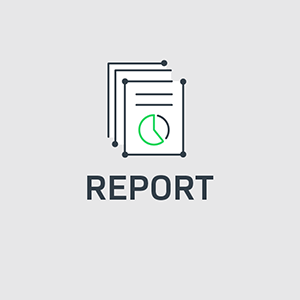
On a recent webinar, we asked participants a somewhat loaded question: do you view exposing shelfware as a revenue risk?
With some 38 percent of software “wasted” – amounting to $34 billion for 149 different organizations surveyed by software lifecycle automation vendor 1E in its 2016 Software Usage and Waste Report – one would reasonably expect that answer to be an exclamation point-laden phrase to the tune of, “Yes, of course! That’s gold! Not to mention a regular cash cow for maintenance and support payments!”
But some two-thirds of respondents simply said, “No.”
As software choice and delivery options increase for customers, ISVs are increasingly focused on ways they can boost customer relationships. I think that’s particularly true for vendors still selling in, or slowly evolving, on-premise licensing models. As such, ISVs are honing in on services that boost trust and loyalty – and nothing quite accomplishes that feat like coming clean with the customer that he might not be using (or even need) something your business sold him.
What’s more – customers, who increasingly gauge their expectations of enterprise software by what’s available in the consumer space – want that data. Some 80 percent of those ISVs surveyed on our recent webinar indicated that customers were asking for software usage data.
As such, forward-thinking ISVs know that sharing software usage data – including on what they’re not using – with customers ultimately leads to higher value engagements. With usage analytics, sharing that data can be a seamless and value-added part of the customer relationship. Here’s how.
Protect competitive advantage
Maybe the software sold to the customer was bundled in with another big purchase, and they just never found enough value in it to actually use it in a widespread manner across the organization as part of their day-to-day processes. Or worse, maybe large pockets of the organization don’t even know they have access to it – and went out and purchased a competitor’s product. Not only are they making a considerable investment elsewhere when they could be doing so with you, that competitor has now gained a foothold to try and oust your position in other parts of the enterprise.
Sharing “non-usage” data gives you insight into something quite valuable for everyone involved in the spectrum of product development and delivery – the ability to ask pointed, meaningful questions of the customer about what they’re not using and why. Was it because they didn’t like it, it didn’t meet their needs, or simply because they didn’t have visibility into their total package of assets with you? With the right answers, you can start to foment actionable solutions – whether that be targeted educational content on how to leverage a particular module, making changes in a future product roadmap that enhance necessary functionality, or going over detailed battle cards on functionality with your account contact that will protect your position in the enterprise.
Foundation for upsell and cross-sell
Sure, your customers can buy asset management software that details application usage internally. They likely already have this capability. But if shelfware is discovered through that particular lens, data becomes your enemy and not your friend, far more likely to put the customer on the defensive when he is approached about, say, an upgrade.
Consider the reverse: a sales rep approaches the customer about an upgrade, pointing to licenses that are being under-used, or not deployed at all, and is ready with tailor-made offers to reflect that reality. With detailed usage information, the account rep can spark meaningful conversations down to the very modules that can solve customers’ business problems, not create more for them. What’s more, leading companies integrate and expose usage data directly within the CRM system, lending account representatives a real-time view of exactly what’s being used in the account and what’s not being used, not only facilitating one-on-one engagements, but allowing them to unearth trends within industries, regions and more that can help package software in more targeted manners to maximize value for the customer and the ISV.
You may be interested in: Customer Data Analysis via Software Usage Reports
Boosts data-driven product development
Sharing information with your customers on what they’re not using means that, conversely, you’ll be able to share detailed information on what they are using, lending end-users crucial visibility into both where things are going well, and where things could be improved. And with trust built by data, guess who they’ll turn to in order to drive process efficiencies through technology? That’s right, you.
Sharing usage data boosts co-innovation, that collaboration between you and a customer that is a partnership in improving and even transforming business processes. And that benefits everyone on the broad spectrum of product development, deployment and adoption. Developers have customer feedback to drive data-driven product development. Marketing knows exactly what business problems customers are having and can create detailed, targeted offers on how the software can help solve them. Sales can point to a growing list of reference accounts to drive net new customer wins. And customers solve business problems.
So don’t be stingy with your usage data. Let go of your fears of losing those grazing cash cows in favor of blazing entirely new trails with your customers.


